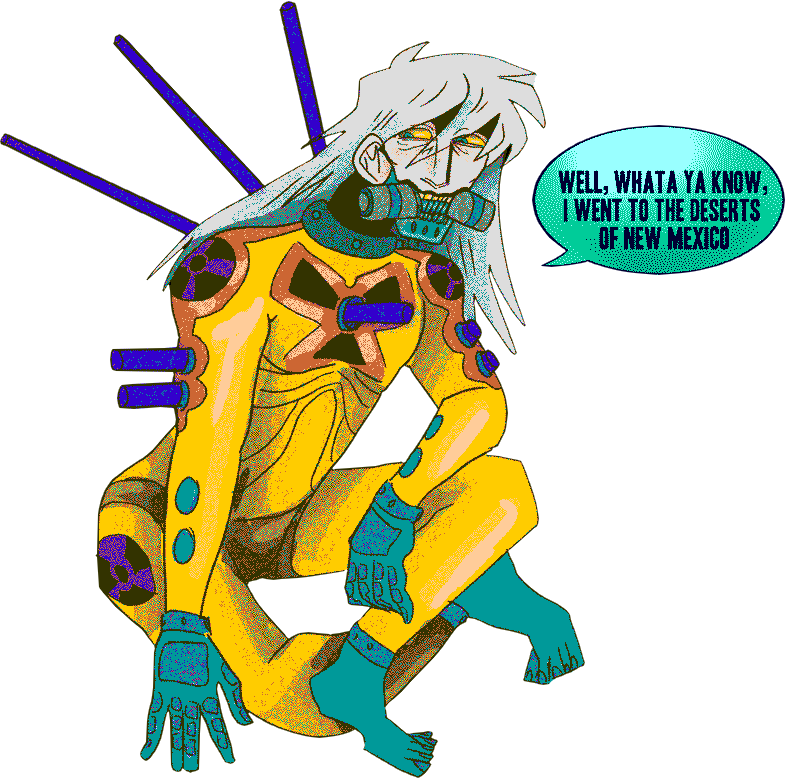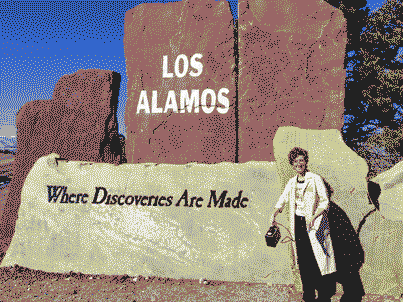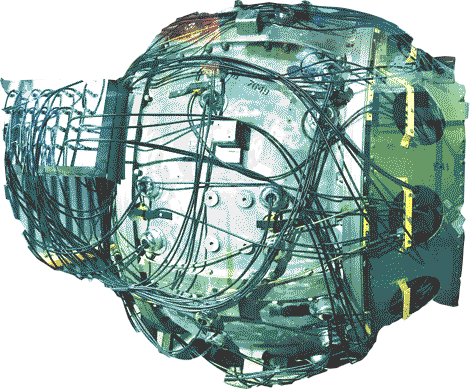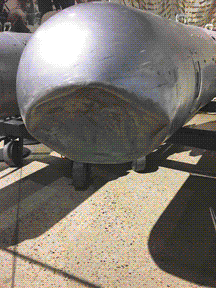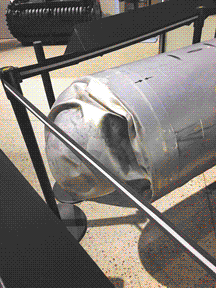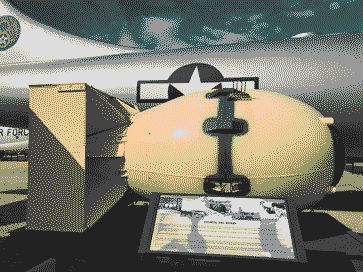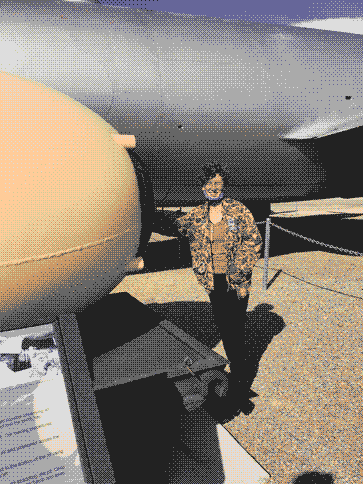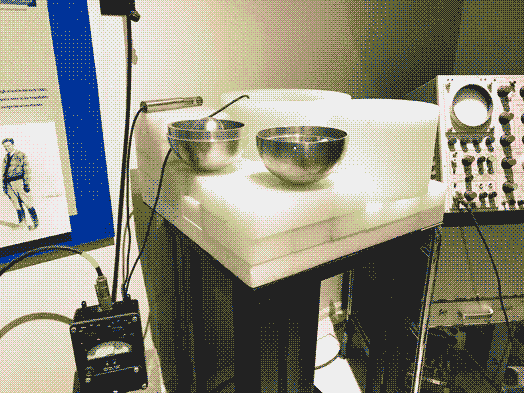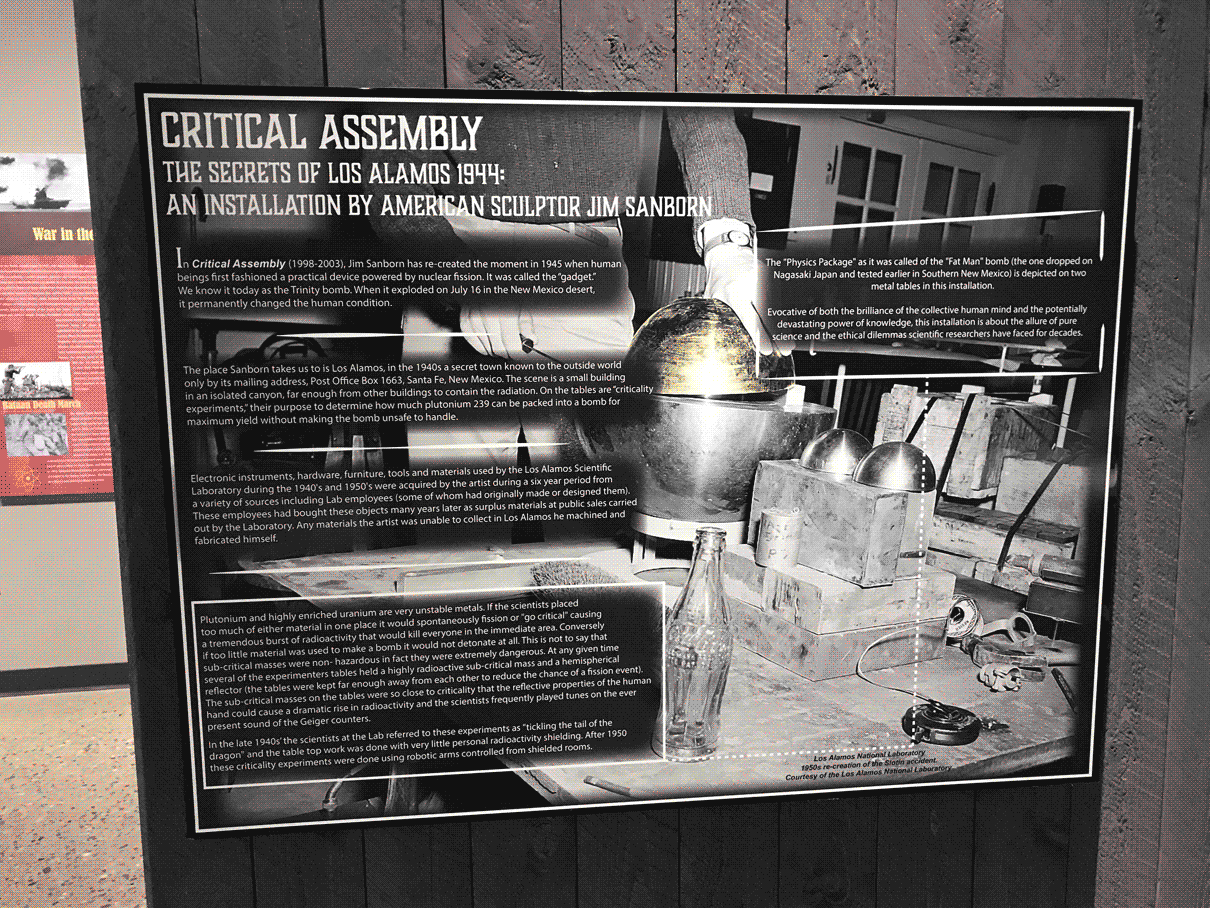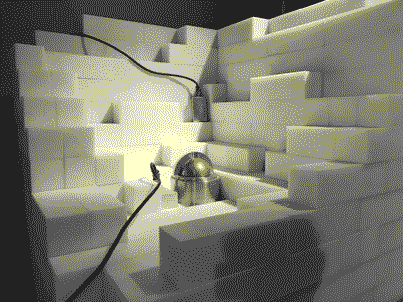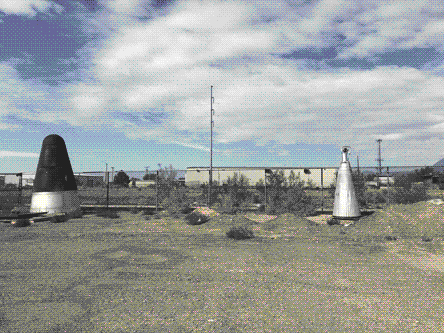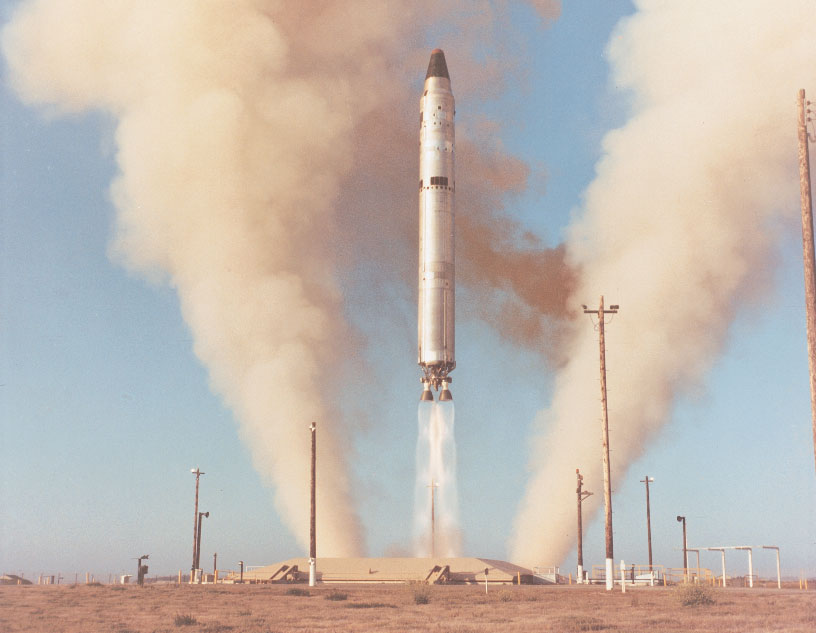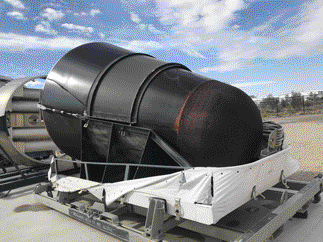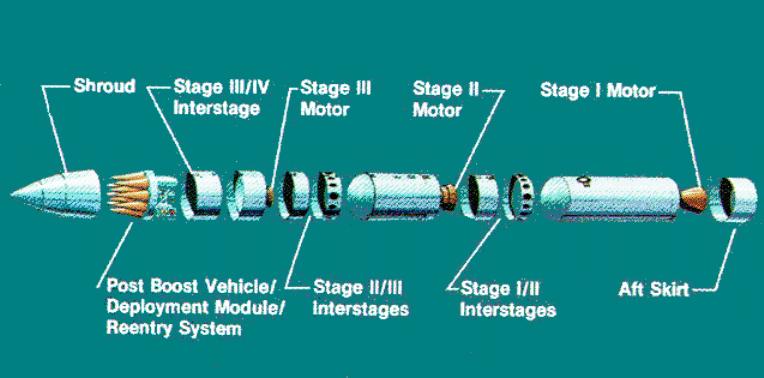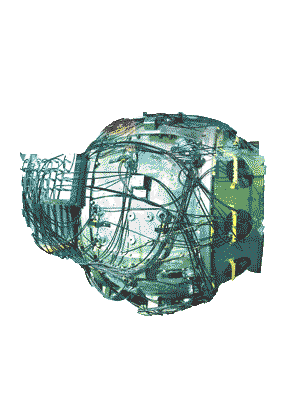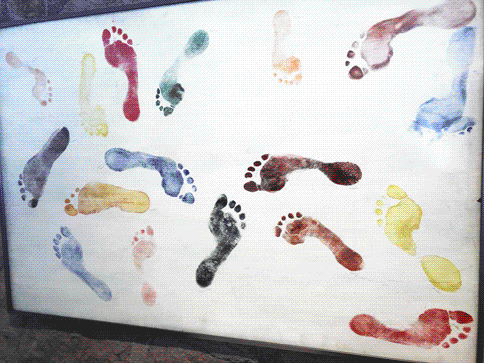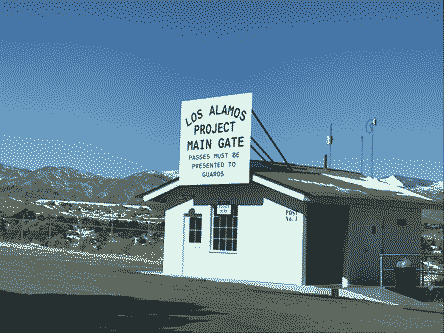
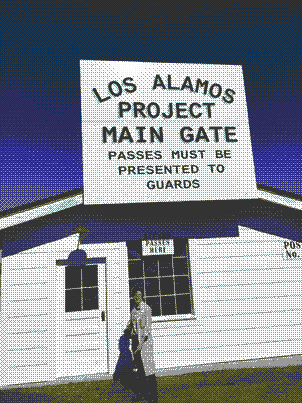
When you first enter the town, to the right you'll see a 'project main gate' sign on a small building made to replicate the original security gate (this is just a converted public restroom). I believe the original wood sign is long gone. This replica was created for the TV series
Manhattan and then donated to the town. According to a historian we met in the Los Alamos History Museum, the show “isn’t very accurate”. Still, she said the citizens appreciate the sign and it's a pretty cool photo attraction.
While taking pics in front of the sign, my dosimeter fell apart (the bottom was unscrewed??) and it was pretty hilarious trying to put it back together with my dad.
My dad and I were fortunate enough (stupid enough?) to actually go inside the Los Alamos National Labratory gates (yes, it's still a functioning labratory!!) Because of the way the town was built on the mesa, you have to drive through the labs to get to nearby national parks. We had to show guards our IDs and were told to
1. not take any pictures,
2. not make any left turns, and
3. not to bring any firearms onto the property (my dad, being a gun dad, failed this step).
I like to pretend in an alternate timeline, we were arrested while I was wearing a literal lab coat and holding a 1950s West Hollywood dosimeter.
Once or twice a year, the labs allow guided tours of the historic buildings within lab property. I would love to come back and see the Slotin building...
I'm not sure what's still there, but I'd love to see Test Area (TA) #18, as this was where the
Lady Godiva critical assembily tests took place. TA 18 equiptment is now
stored in Nevada.
Refrences (I gotta read more in depth sometime).
https://www.energy.gov/nepa/eis-0319-relocation-technical-area-18-capabilities-and-materials-los-alamos-national-laboratory
https://www.energy.gov/sites/default/files/EIS-0319-FEIS-Summary-2002.pdf
https://www.energy.gov/sites/default/files/EIS-0319-FEIS-02-2002.pdf
https://alchetron.com/Godiva-device
While visiting the nearby Bandelier and Valles Caldera National Preserve parks, we drove around the perimeter of the laboratory, which is mostly 13 acres of trees, barbed wire fence, and obscured buildings. There’s multiple access points to Test Areas along this route. Every 100 feet or so, “no trespassing” and “warning: explosives” signs are posted along the surrounding chain link fence. From the road, you can see some buildings and equipment (I saw a B-52 body and watertower).
In Santa Fe you can visit (approximately) where Manhattan Project scientists would meet before heading to the secret city. 109 E Place, Santa Fe was a small building operated by Dorothy Scarritt McKibbin, the secretary in charge of paperwork and new arrivals. Today, it’s a cute little artisan courtyard next to a chocolate and cashmere shop.
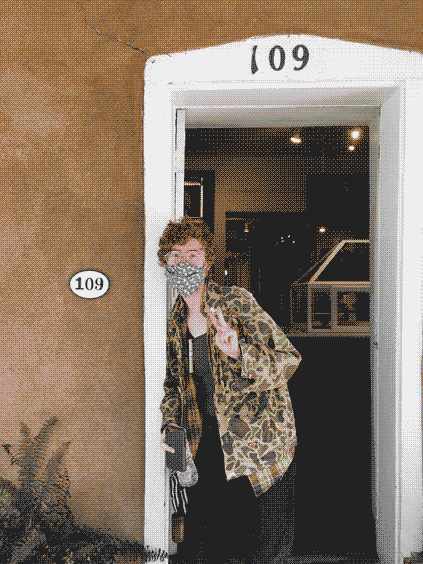
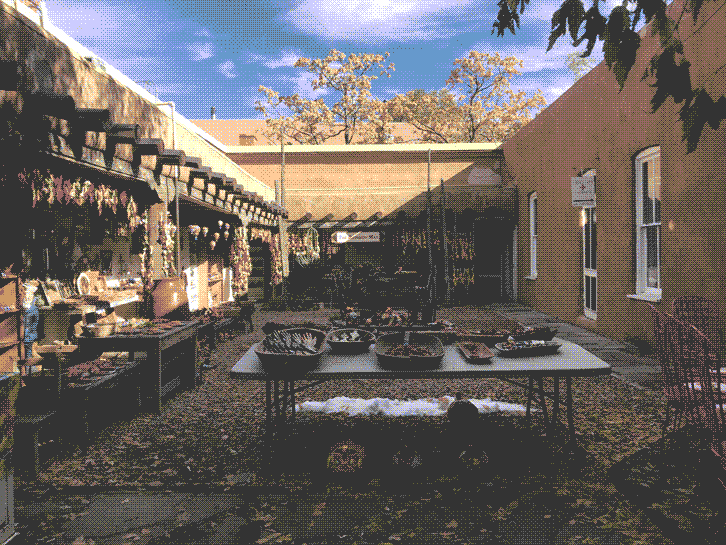
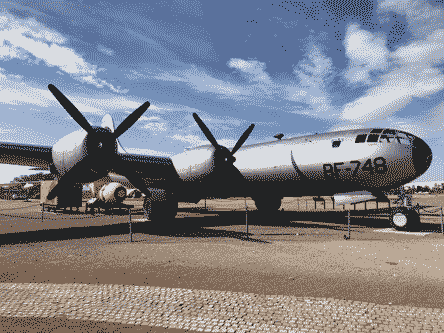
Behind the National Museum for Nuclear Science were several notable aircraft.
This is one of only three Boeing B-29 Superfortresses altered to carry nuclear weapons at the end of WWII.
“The Museum’s historic B-29 actually never saw combat, as it was delivered to the Air Force just a few days before WWII ended,” said Jim Walther, Museum Director. “It was delivered on the very significant day of August 9, 1945, the same day the B-29 named the Bockscar dropped the plutonium bomb, Fat Man, on Nagasaki.”

